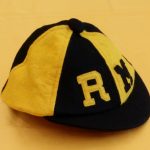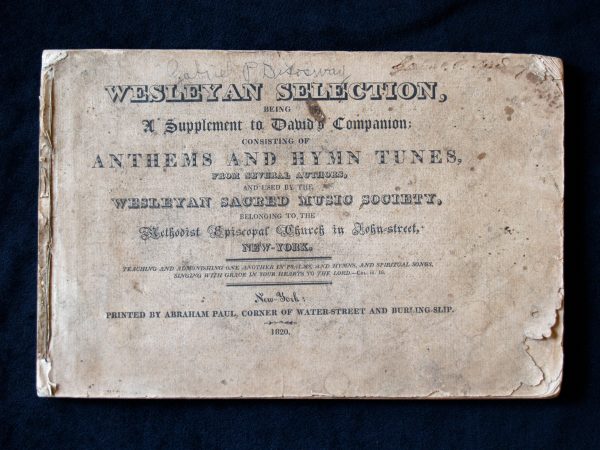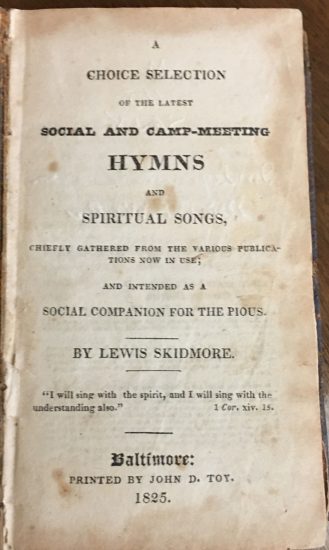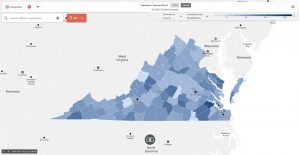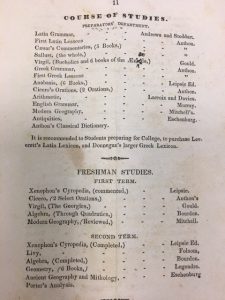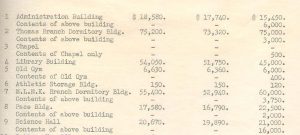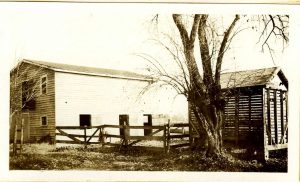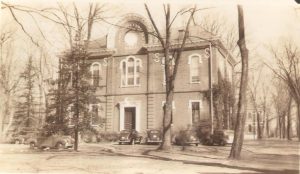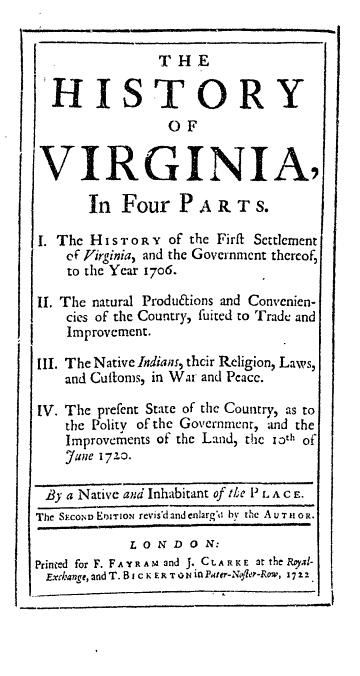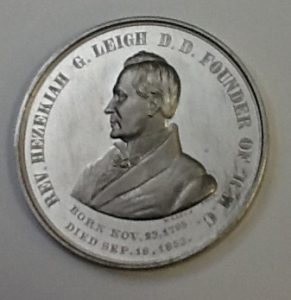
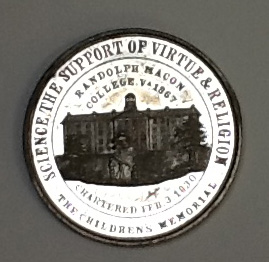
The Rev. Hezekiah G. Leigh medal shown here, with Reverend Hezekiah G. Leigh on one side and the main building of Randolph-Macon College in Boydton on the reverse side, was produced in 1867 by the College and distributed by the Richmond Christian Advocate, the Methodist newspaper in Virginia, as a means to raise funds for the repair of Randolph-Macon College after the Civil War. Contributors to the fund would receive a medal of Rev. Leigh, Bishop Joshua Soule, or both, depending on the amount of their gift. During this era, memorabilia with images of respected individuals was popular appearing as prints, statues and busts, plates, medals, and other items.
Advertisements for the medals appeared in several publications. The February, 1868 issue of the Southern Planter and Farmer magazine included this one:
“Beautiful Medallion Likenesses of Bishop Soule and Rev. Hezekiah
G. Leigh, D. D.
We are indebted to the courtesy of the President of Randolph Macon College for the above named Medals. These eminent men of God, whose names adorn the annals of the Methodist Episcopal Church, South, and whose distinguished faithful and efficient labors in the gospel have enshrined their blessed memories as “holy relics” in the hearts of all true Methodists, are most beautifully and artistically expressed in bas-relief likenesses of admirable truthfulness on metalic disks of bright untarnished lustre. These souvenirs are offered to those who contribute to the fund being raised for the repairs of Randolph Macon College, upon the following terms:
A contribution of $2 entitles the donor to the likeness of the Bishop.
A contribution of $1 to that of Dr. Leigh, the founder of the College.
And for three dollars both will be given to the contributor.
Address Rev. S. T. Moorman, care of the Richmond Christian Advocate.”
Unfortunately, funds were still tight in post-war Virginia and very little money was raised this way, so the repairs were never made to the College’s main building in Boydton. The College had closed in 1862 for the duration of the war and although there was no military activity in Mecklenburg County, the College’s main building was occupied for four months by the Union Army at the end of the war and sustained damage, although we have no documentation of the nature and extent of that damage. The College moved to Ashland in 1868 instead, selling the property in Boydton.
To see this item or other materials pertaining to the history of Randolph-Macon College, contact us at archives@rmc.edu.

